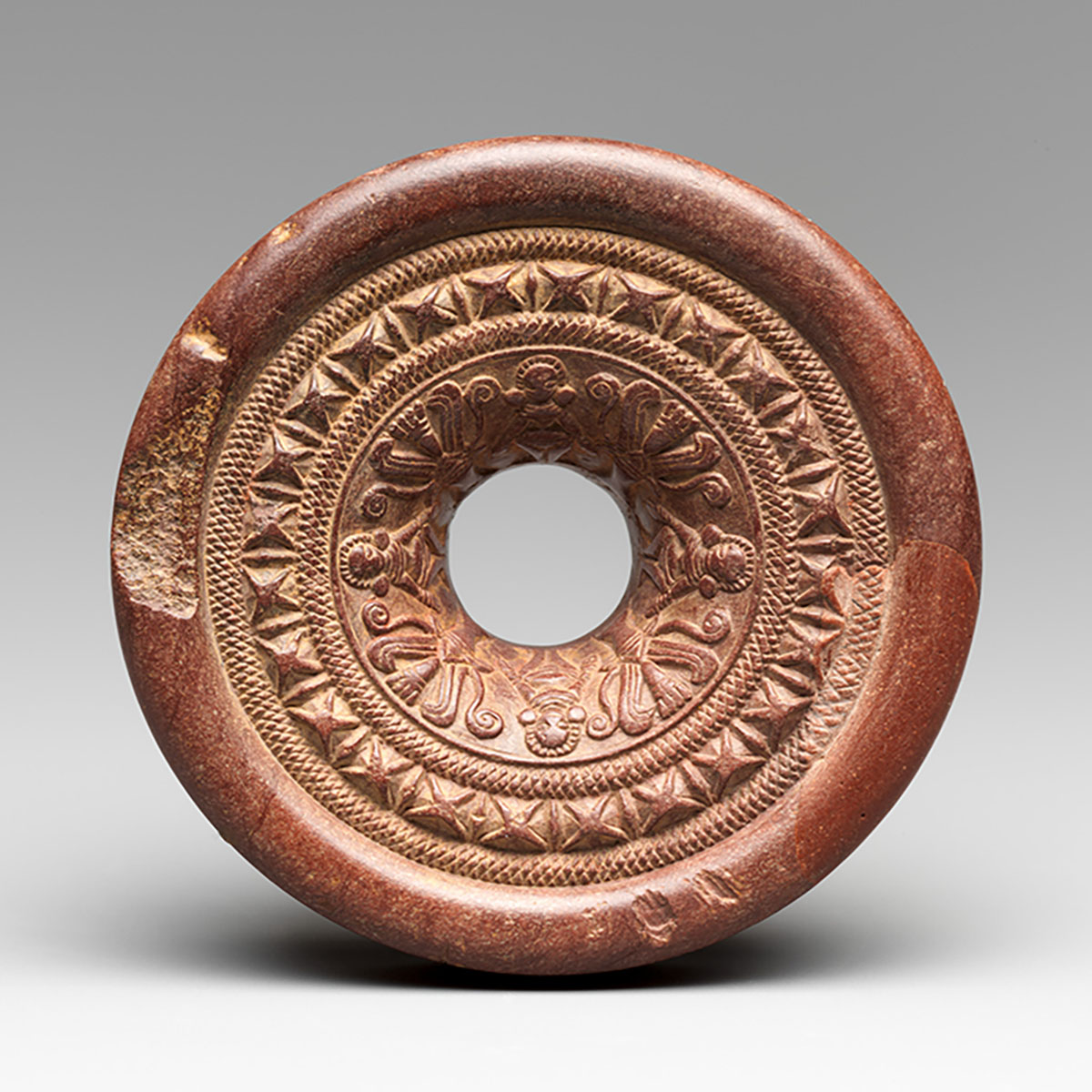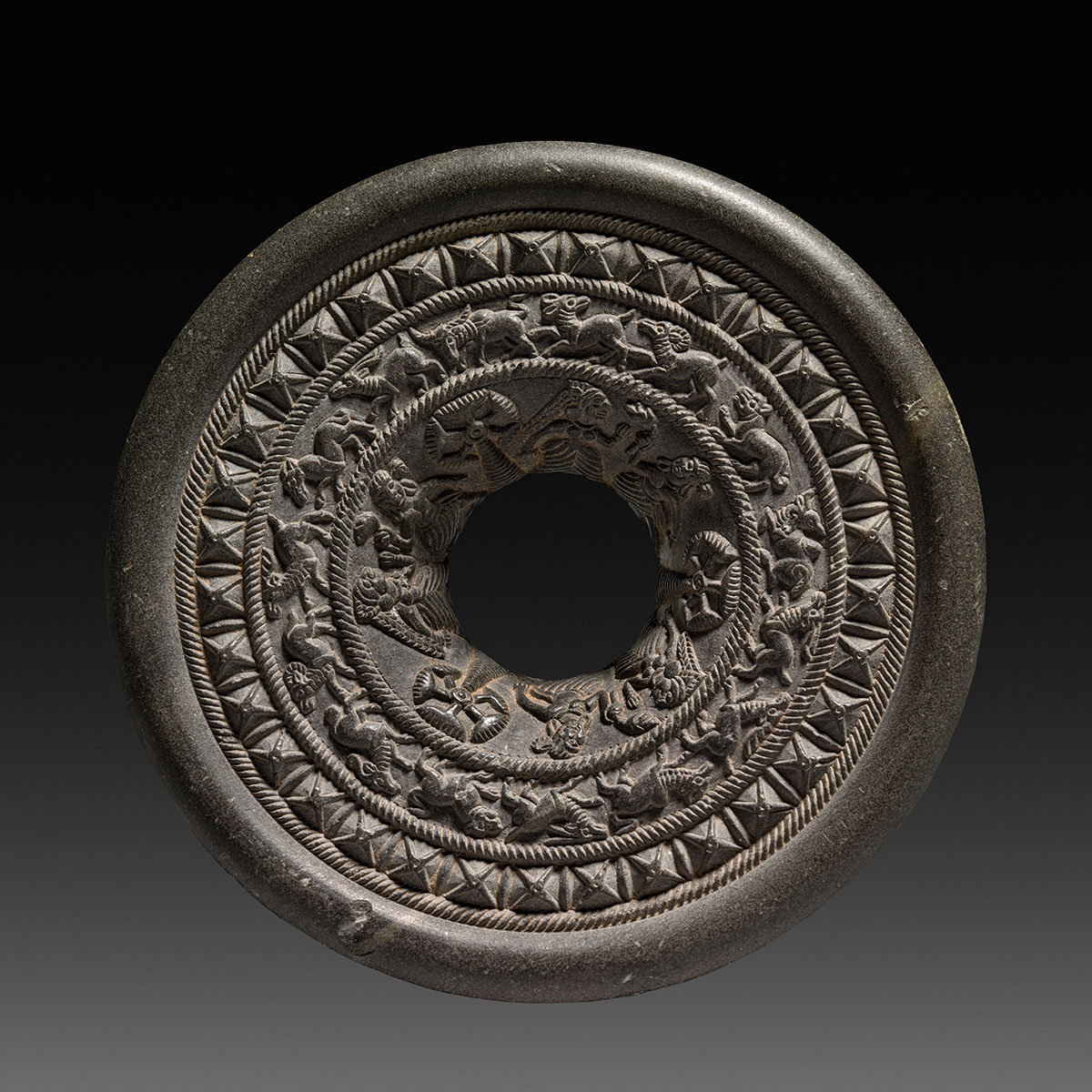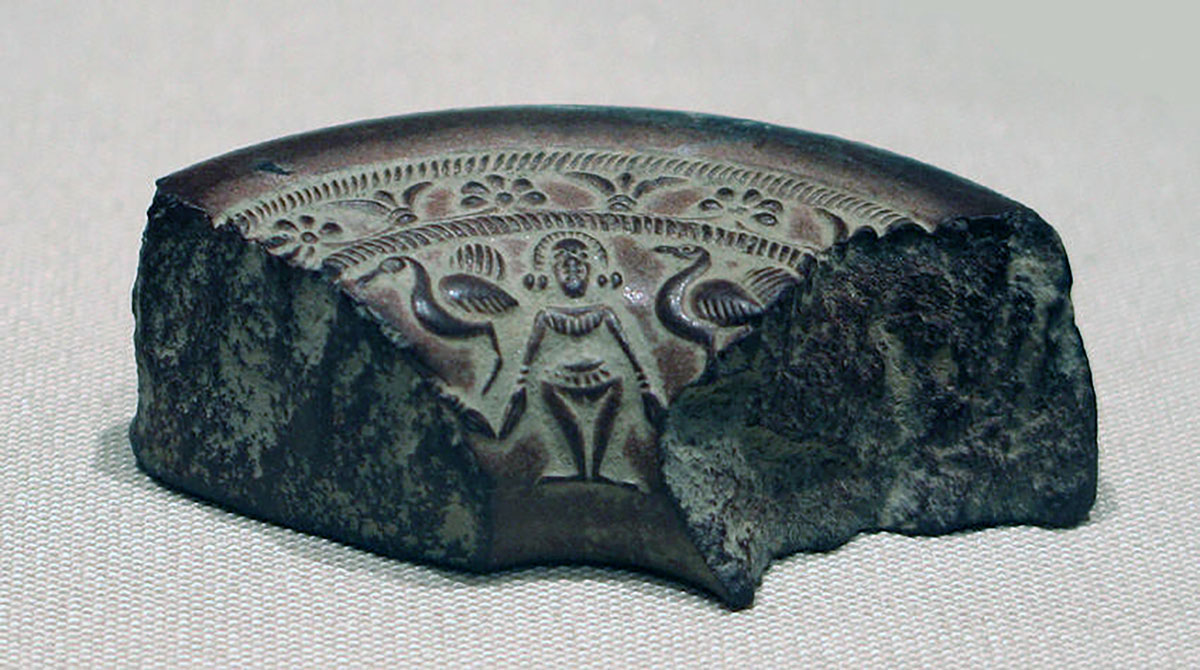ARTICLE
Mauryan Ringstones
Small ring-shaped stones, typically made from sandstone or steatite, with a carved upper surface that curves in towards a central void and an unmarked, but highly polished, underside. Ringstones of this type date back to the Maurya and Shunga periods, and are characterised by their uniformity of style and composition. Of the estimated seventy ringstones, measuring between 4 centimetres and 10 centimetres, most were found between present-day Punjab and Bihar with unclear provenance, suggesting their distribution and trade throughout the Indo-Gangetic plains of north India and Pakistan. So far, the only ringstone excavated from outside the Indian subcontinent was found in 2014 in peninsular Thailand and is unlikely to have been made with state patronage.
The relief carvings on the convex surface of the ringstones are rendered in concentric bands of figurations with depictions of female figures, floral motifs, animal motifs or a combination of these — interpreted as representing fertility and prosperity. These bands are also separated by decorative geometric patterns such as cable-edging or rope borders. The innermost band usually contains alternating female figures and floral motifs that appear to be emerging from the central void. Figures of amorous couples or individual women, possibly goddesses, are typically rendered nude and in some cases with splayed legs, reinforcing the fertility symbolism. Creepers usually form a running base, terminating in trefoil forms between the figures. The Tree of Life motif, in its flowering form, is also commonly featured, possibly as a symbol of fecundity.
The outer bands typically depict animal figures along with criss-crossing patterning that, in some cases, frames the overall design and has been compared to the Buddhist vajrasana motif. Due to the small size of the ringstones and the concentric-band format of the design, the figures depicted on them have minimal detailing. They have often been compared to discstones with which they share some characteristics — such as size, sculptural content and general provenance — but differ in shape and composition and, most notably, lack a central hole.
Mauryan ringstones are amongst the most enigmatic artifacts of Mauryan and Shunga art. Interpreting their iconographic content as having socio-religious symbolism, scholars have speculated that they may have been used as amulets and ritualistic objects or designators. Some have also proposed that they could have been used as moulds for jewellery-making, a heavily contested view that has been bolstered by the recent discovery in Thailand, where pieces of embossed, gold reliefs were found near the site of excavation. While this discovery supports the possibility of its use in jewellery-making, it fails to definitively establish the original and intended purpose of the ringstones, which remains debated among scholars.
At the time of writing this, these ringstones are housed in various museums in India and abroad, with some in private collections. The largest collection of ringstones exists at the Patna Museum, Bihar.
Bibliography
Our website is currently undergoing maintenance and re-design, due to which we have had to take down some of our bibliographies. While these will be re-published shortly, you can request references for specific articles by writing to hellomapacademy@map-india.org.









